Seville to Belfast and then a first look at the Cathedral Quarter... in lock-down...and a few murals
- Fiona
- Jun 15, 2020
- 9 min read
Updated: Jul 4, 2021
Everyone has their own story of when the pandemic began to impact their lives - this is a brief account of ours...
When Covid 19 first appeared in Spain we had been quite happy in Seville - and had planned to ride it out there - but then the Spanish government introduced a State of Alarm and the country, like so many others at the time, began to lock down.
Initially we were still okay - walking and shopping but social distancing and washing our hands often like we had OCD.
And then the lock-down became harsher...
No outdoor activity allowed - only one person from each household to go to the supermarket and to minimise the number of times to go. Just as they introduced this we were out walking when the police stopped us to tell us to go home and that we were not allowed to walk or be outside together. They were quite nice about it but it woke us up to just how serious things had become. And so we stopped going out - our daily exercise was walking up the stairs to the roof of our apartment building (only three floors so not particularly taxing!) My 10,000 plus steps a day walking streak came to an abrupt end (at 614 days).
The Covid 19 death toll in Spain continued to climb - when it was consistently over 700 people per day we began to be concerned that with only very basic Spanish language skills it would be extremely difficult to navigate the Spanish heath system if we became ill. And this, together with not being able to exercise, the authorities beginning to close the ports, and various friends and family members urging us to leave - helped us to decide that it was time for us to go ...
We decided on the Sunday and then two nights later we were on a plane on the way to London and then Dublin and finally on a bus to Belfast.
The airports in Seville, Gatwick in London, and Dublin were all very quiet and a bit eerie. There were few people about, the shops were all closed. Each point of the departure process at both Seville and Gatwick - security, smart gates and boarding - had small queues and everyone was social distancing. On the flight to London the flight had about thirty people on it, including some British lads, who were had been in Andalucia on a cheap holiday, and a couple of families. The staff had very little to do as there was no inflight food service and they also had no PPE. Disembarking was a bit of a scrum as the Brits returning from their holiday bustled to get off - with no thought of social distancing!
When we arrived at Gatwick Immigration, the staff were standing in groups just chatting with each other - no questions about where we had come from or information about Covid-19 which we thought was odd at the time - but was, as it became evident later, indicative of the British attitude to the pandemic from the outset - and probably why it has hit the UK so badly! Everyone seemed to exit through the smart gates.
We overnighted at one of the few airport hotels that was open and then left ont an early flight to Dublin. Arriving in Dublin was the opposite of arriving at Gatwick. We were questioned by Immigration about where we had been, where we were going, what we were doing there (well I was, being on a Kiwi passport) although they didn't seem too bothered once we said that we were going to Belfast. We were handed information leaflets about Covid-19 in Ireland as we exited the arrivals area. Every 1-2 minutes a Covid-19 announcement came over the loud speakers - quite a contrast to what we had experienced at Gatwick
The bus to Belfast was sparsly populated and the passengers were all very subdued. The scenery was beautiful and from that aspect It was great to be back in Ireland! Of course there is no border crossing between Ireland and Northern Ireland so within 2 hours of landing in Dublin we were (politically) back in the UK1
First Impressions of Belfast
We arrived at our first AirBnb on a cool grey Wednesday afternoon in late March. Located in St Annes Square in the Cathedral Quarter right in the centre of the city our apartment overlooked the square and we had a great view of the MAC arts and theatre complex as well as a framed view of the Cathedral. The square itself is relatively new and is a lovely spacious piazza with cafes and restaurants lining its periphery (all closed ofcourse). It is part of a regeneration project to make the Cathedral Quarter the 'cultural quarter' in Belfast. The project has developed this oldest part of the city from a warehouse district that served Belfast's once-thriving linen and shipbuilding industries, into a bustling area with an impressive culture and arts scene.
Belfast is arranged into five areas North, East, South, West and the City Centre. In addition, the City Centre has been divided into Quarters which provide a focus for culture, tourism and economic development. There are actually six Quarters...
The Cathedral Quarter, The Titanic Quarter, Queens Quarter, Market Quarter, Smithfield and Union Quarter, Gaeltacht Quarter (West Belfast). This post covers some parts of the Cathedral Quarter.
St Annes Cathedral - also known as Belfast Cathedral
The building of the current cathedral began in 1899. What is interesting about its construction is that Its walls were built around the original parish church that was on the site (The parish church was first consecrated in 1776 and called St Anne’s, after the mother of the Virgin Mary) and services continued to be held in the church until 1903 while the building work was taking place. The parish church was dismantled in 1903 and the Cathedral's nave was consecrated in 1904. The cathedral expanded over the following 100 years or so right up until 2007 when a 100-metre stainless steel spire was installed. The spire is said to represent a modern beacon of light for the city and is called the 'Spire of Hope'! In the inimitable Irish style the locals have dubbed it the 'Rod to God'.
Images
1-3 Saint Annes Square
4-5 Saint Annes Cathedral at dusk
5 The main street in the city at dusk - in lockdown
6-7 Later pictures of the Cathedral showing the stainless steel spire
Even with the shop shutters down, the narrow cobbled streets of the Cathedral Quarter are great to wander around and explore – including the slender laneways branching off the streets. Many go these laneways have mural adorned walls and are home to many cosy pubs - of course it would have been even better if we had been able to spend some time imbibing the local brews in these cosy pubs - however, for the moment taking in the fabulous street art as well as viewing the exteriors of Belfast's beautiful historic buildings that give so much character to its vibrant inner city will have to be enough!
The good news is... that as I write this, the Northern Ireland government has announced that they are working towards having everything open again by the 20th of July. And so, with eager anticipation, we wait...
A few Belfast pubs and the Belfast Entries
The Duke of York
Was a pub for 200 years but got blown up in 1972 – apparently the objective was to bomb the High Court but the perpetrators came to a security checkpoint and bolted up the alleyway to get away. The bomb went off prematurely and flattened the pub. It was rebuilt in 1974 in the style of old Northern Ireland and is decorated on the inside from floor to ceiling with Belfast ephemera gleaned from pubs across the nine counties of Ulster; it also has a mirrored ceiling which is very low (we stopped for a drink here in 2018). Outside in the lane and in the courtyard across the lane the exterior walls are covered with murals from guest artists, which you can appreciate while sitting on one of the park benches that line the lane, ideally while supping on a pint of the black stuff (Alan says) - once the pubs reopen of course!.
The Dirty Onion and Yardbird
In a building that is over 300 years old - the building that has been a warehouse and traded everything from fish and tea to tinned soup, linen and whiskey.
The Northern Wig
This area of Belfast was once the literary heart of the city. The Northern Whig was a popular satirical 19th century newspaper that was circulated from 1824 until 1963. Today the building has the same name as the newspaper and is a gorgeous looking pub.
The Thirsty Goat -
A quirky name for a new pub in a building that has been part of Belfast’s history for centuries.
And then there are the Belfast Entries...
It has been fascinating to learn that the Belfast Entries are a series of historical narrow alleyways in the city centre that were created from about 1630 to service the dense residential and commercial areas of the city at that time. They are the oldest parts of Belfast city, and there are still Victorian and pre-Victorian period pubs trading there. Unfortunately a large number of the Entries were largely destroyed during the Belfast Blitz in World War II.
Pottingers Entry
Pottingers Entry is the most obvious of the Entries with its arched entrance and wrought-iron signs. The pub in this Entry is called The Morning Star - and it was first built in 1810 as a coaching stop for the Belfast to Dublin post.
The Morning Star name is said to come from the nickname the boys who worked at the old mail coach depot called the building as it was their first point of call of the day usually as the rest of Belfast was still asleep and all that guided them were gas lamps, the moon and stars.
Winecellar Entry
The Winecellar Entry was named after the many wine and spirit merchants located there. Dating back to 1630 it is home to White's Tavern and is considered to be the longest serving pub in Belfast. In 1868 the then proprietor was a fish monger and wine merchant and set up an outlet in the Wincellar Entry and named it The Oyster Rooms - as it is still known as today. (photo below)
Joy's Entry
Joy's Entry is particularly narrow as you enter it from the main street, and then widens to reveal several pubs, such as McCrackens Cafe Bar and The Jailhouse; The Jailhouse is thought to be the building where the Entries namesake was held as a prisoner before being hung in the nearby Cornmaket, We stopped for a drink at this pub when we were here in 2018, an experience that is memorable for the live Irish music performance by the buskers in the lane that we were treated to while we enjoyed our drink. The Guinness was also pretty good according to Alan!
Wilson's Court
Wilson's Court is where the Mermaid Inn is located. Originally known as the Rainbow Hotel and Tavern in 1860 it is thought to be one of the earliest surviving domestic buildings in Belfast
Images
1-2 The Dirty Onion and Yard Bird - the mural on the back wall is supposed to represent both Belfast’s industrial heritage and past tensions - an acknowledgment of past and present.
3-4 The Thirsty Goat
5 We loved this street sign
6 The Friend at Hand is a unique whiskey off-licence combined with a mini museum charting the whiskey distilling history of Belfast.
7 The Commercial Court laneway where you will find the Duke of York
8-9 This area was once the literary heart of the city with The Northern Whig, once a popular satirical 19th century newspaper and now a gorgeous bar.
10 Whites Tavern and the Oyster Rooms in the Winecellar Entry
11-13 The Morning Star in Pottingers Entry - you can see how low and narrow the Entry is...
14 The Jailhouse at the beginning of Joys Entry
Belfast Murals:
City facades in Belfast have served as the canvas for political expression since the early 20th century, and there are still many of these political murals being painted (in fact in West "Belfast one was painted just two days ago for the Black Lives Matter protest) that serve to demarcate catholic and protestant neighbourhoods (we have some great pictures of these for future posts).
But, on the walls of the Cathedral Quarter the murals tend to be mostly apolitical and are the work of both local and visiting artists. Below, are pictures of a few of my favourites.
Images
'Lobster Pot' by the Australian street artist Smugone, like the Mona Lisa no matter what angle you look at it it is like he is looking straight at you.
A mural by the London-based artist, Pang, features her a character hard at work whitewashing a portrait by Rembrandt.
“The Duel of Belfast, Dance by Candlelight” by local artist Conor Harrington - perhaps political with a wider significance - some have interpreted it as highlighting the waning empire - the artist says the piece is less about Britain and more about the Colonial West as a whole.
Painting of a diver in an antique diving suit carrying a mermaid in his arms by street artist ADW. (You can see the spire of the cathedral in the background)
By French street artist MTO entitled “Son of Protagoras” The crouching figure holds a dove. The two red arrows seemingly carrying symbols of catholicism and protestantism, skewering the dove – a symbol of peace — and thus has ties to the time of the Troubles, Strategically placed outside the Northern Ireland War Memorial.
"Pandora's Jar" by StarFightera
By Italian artist Alice Pasquini - whose focus revolves around topics of femininity and independent women,



















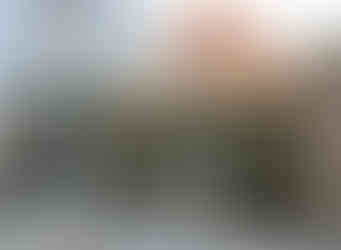

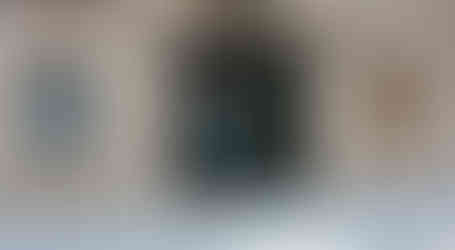







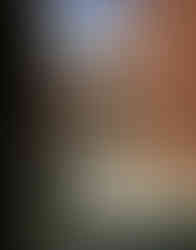





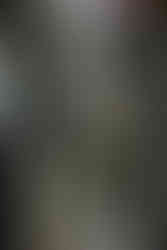

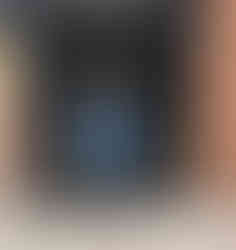



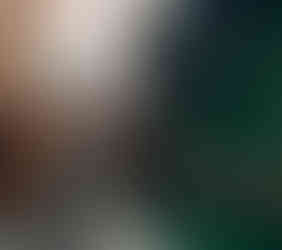




















You'll be able to take us on your walking tour next week - you have done an impressive amount of research Fiona